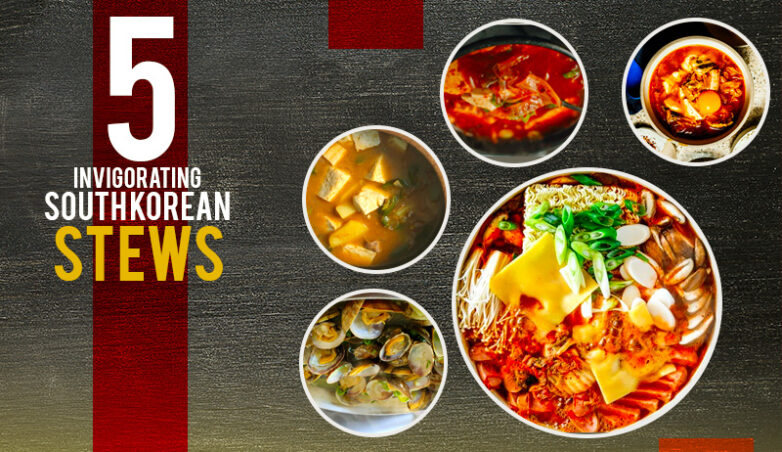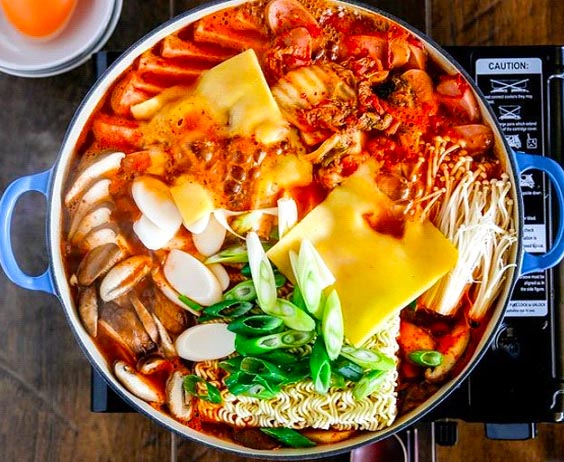
South Korea is well-acknowledged for its vast possession of traditional and modern cuisines that tourists admire and that locals are proud of. The country’s value for food is seen from how all dishes — from home-cooked meals, street foods to restaurant-served menus — have a story to tell. Most of them represent the country’s history and culture. Moreover, nowadays, many come as a result of the fusion of classic cooking styles and contemporary food trends.
Years and generations passed by, and Korean cuisine has evolved in many diverse ways too. With cultural influences and civilization changes present, it’s no doubt how so many aspects of Korean cuisine have been altered, but the originals are not eliminated.
The modifications and evolution in the food scene is true, but one of the immutable and non-removable parts is the presence of stews in the main course of Korean full meals. In other countries, soups and stews are typically eaten as appetizers or mere refreshments. In South Korea, however, they are like major bowlfuls. They are so much loved for their taste and, of course, for the great histories that go along with them.
Sometimes, when you look at Korean stews, you say most of them look the same, so it’s hard to differentiate until you really learn of them. To help you to become more familiar with them, here’s a list of 5 invigorating South Korean stews that you must try. They will become your favorites once you taste them, so don’t miss the chance when you have it! Learn more about their relevance too.
1 – KIMCHI JJIGAE (KIMCHI STEW)
When you hear Korean food, this is probably the first food, if not one of the firsts, that comes into your mind: KIMCHI.
Kimchi is a traditional side dish made of fermented veggies (napa cabbage and radish) and seasoned with spring onions, gochugaru, ginger, garlic, and more. As this staple is a powerful combination of sourness and spiciness, you might already have a hint of what the first stew tastes like.
Kimchi jjigae is a savory Korean stew that contains kimchi as its main element. Other ingredients typically include cubed tofu, green onions, potatoes, and other suitable vegetable pieces. Some people choose to add pork belly, ribs, or shoulder to their kimchi stew. Meanwhile, some prefer fresh seafood such as shrimps, clams, tuna, or squid. Well, you may have both in one cooking as well.
Nobody wants their kimchi jjigae cold. It is always peerlessly served red and hot! Aged Kimchi is said to make your kimchi jjigae better because it will spread more tang to the whole stew.
Note that kimchi is loaded with nutritious components and has low-calorie content. It enhances heart health and lessens inflammation in the body too. When you eat kimchi jjigae, you’re satisfied and made healthy! It is placed on a big bowl for the whole table to share nice meals and beautiful memories together!
2 – DOENJANG JJIGAE (KOREAN SOYBEAN PASTE STEW)
The refreshing look of doenjang jjigae is enough to make you want to take a spoon sip of it!
The Korean soybean paste stew has doenjang (fermented soybean paste) as its main component. Garlic, tofu, onion, scallions, potatoes, kelp, jalapenos, and mushrooms are commonly put in for a fresher zing! The non-compulsory add-ons include meat, beef, chicken, seafood, and other vegetables aside from the required veggie ingredients.

Doenjang jjigae is indubitably very nutritious and rejuvenating. Its rich and flavorsome taste with a pinch of spice makes this traditional Korean stew a totally revitalizing dish that nobody would want to say “no” to. Best eaten with rice and kimchi, this stew is a must-try of every tourist traveling in Korea.
What’s more, doenjang jjigae is a household favorite in South Korea! Childhood memories and hometown stories are best shared with a bowl of this well-loved Korean stew. Many choose it over any extravagant and expensive feast. That’s how much of a blockbuster doenjang jjigae is!
3 – SUNDUBU JJIGAE (SOFT TOFU STEW)
Tofu may be a common addition to many other kinds of Korean stew, but of course, it has its own time to shine. The sundubu jjigae radiates a taste that lets you relax and just enjoy the meal because of its smooth and soft yet definitely delish smack!
Sundubu jjigae’s star element is the uncurdled tofu, so it is soft and delicate. Though diverse textures may be on the tofu, the ones in sundubu jjigae are always not stiff and solid. They can be easily crushed and spread throughout the stew.
The clear taste of sundubu jjigae is incorporated with fresh vegetables, onions, mushrooms, garlic, zucchini, soy sauce, pepper paste, or flakes. Meat, beef, and seafood are optional but great additions. Many people are in favor of the spicy soft tofu stew, but you may have it non-spicy as desired. Red sundubu jjigae is very popular, but it’s fine if you want it lighter or clear.
Because of the soft tofu’s silkiness, it might slip from your spoon, so you better be more enthusiastic to finish that sundubu jjigae bowl in no time before it gets cold!
4 – CLAM STEW (JOGAETANG)
Korea’s seafood dishes weaving beauty through the freshest local ingredients and recipes are unmatched. The country is also abundant in shellfish caught right from its captivating waters!

The jogaetang is a serious deal! Filled with a scrumptious sapor, it is a mind-blowingly soothing and calming dish to eat alone or to share with loved ones. Of course, the broth is a key point that may define what the end of cooking this clam stew maybe. Aside from the naturally awesome seafood plus dried anchovies, other ingredients are scallions, ground black pepper, garlic, green chili pepper, onion, local radish, and sesame oil.
One of the most loveable things about jogaetang is its simple yet clever way of making it. Such a magnificent seafood stew is worth every penny!
5 – ARMY BASE STEW (BUDAE-JJIGAE)
A stew that certainly brings you back to the past is the budae jjigae or army base stew. Its history dates back to the 1950s after the Korean war. There was a generally tremendous scarcity in food when the war concluded, so Koreans used the excess processed meat products from the American military bases to fill in their sustenance. Utilizing the processed food, a restaurant owner cooked a stew. That’s when this very famous budae jjigae was born, and thus its English name.

Typically, budae jjigae blends together kelp, anchovy, baked beans, tofu, kimchi, noodles, pork, rice cakes, gochujang, and, of course, the American processed products, spam, sausages, ham and hotdogs.
Budae jjigae may not be a top option if you’re on your diet but when you have something to celebrate or when you want to turn a frown upside-down, it is!
SOUTH KOREAN STEWS
Stews are not simply dished starters but are actually prime parts of a whole drool-worthy course in South Korea. Noteworthy yesteryears can be sincerely remembered, and new happy moments can be crafted over some relieving stews with tastes you won’t forget!
Read More :
